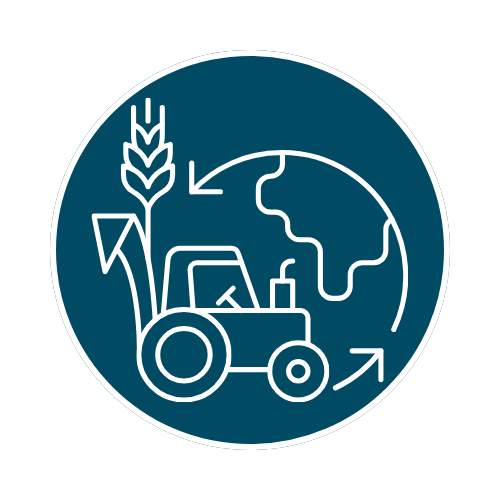
Land Management Change
Explore our library of research material on Land Management Change.
To access the full document you will need to become a member.
Hedgerow pruning frequency effects on soil quality and maise productivity in alley cropping with Gliricidia sepium in Northeastern Brazil (2012)
Authors: Barreto, C., Chaer, G., & Fernandes, F.
Publication Details: Soil & Tillage Research, 120, 112-120.
Executive Summary/Abstract
This paper investigates the effect of pruning frequency on yield and soil quality in an alley cropping system in Brazil. Two species, Gliricidia sepium and maise, were investigated.
Net effect of liming on soil organic carbon stocks: A review (2015)
Authors: Paradelo, R., Virto, I., & Chenu, C.
Publication Details: Agriculture, Ecosystems & Environment, 202, 98–107.
Executive Summary/Abstract
Lime is used to correct the pH in the soil to increase plant growth potential. The addition of lime has several effects on soil health. Some of these effects either increase or decrease SOC stocks: an increase in SOC resulting from higher plant productivity, a decrease in SOC stocks resulting from increased organic matter mineralisation, and an increase in SOC stocks due to improved soil physical attributes. These effects do not affect SOC stocks equally. This paper explores the net change of SOC stocks with these factors in mind.
Do agrosystems change soil carbon and nutrient stocks in a semiarid environment? (2022)
Authors: Santana, M. da S., Andrade, E.de, Sampaio, E. de S., Ferreira, T., Salviano, A., Silva, D. da, Cunha, T., & Giongo, V.
Publication Details: Journal of Arid Environments, 201, 104747–.
Executive Summary/Abstract
Ecological processes and nutrient cycling are affected due to land use change from native forests to agricultural systems. This paper investigates the changing dynamic of soil nutrients from land use change from native forests to agricultural systems.
Irrigation, soil organic carbon and N2O emissions. A review (2013)
Authors: Trost, B., Prochnow, A., Drastig, K., Meyer-Aurich, A., Ellmer, F. & Baumecker., M.
Publication Details: Agronomy for Sustainable Development, 2013, 33 (4), pp.733-749. ff10.1007/s13593-013-0134-0ff.
Executive Summary/Abstract
Irrigation is an important tool to stabilise the increasing unpredictability of the climate. Water restriction is the largest cause of yield restriction. Worldwide arable land under irrigation is 22%. This study investigates the impact of irrigation on SOC sequestration and N2O and CO2 emissions.
Below ground carbon inputs to soil via root biomass and rhizodeposition of field-grown maize and wheat at harvest are independent of net primary productivity (2018)
Authors: Hirte, J., Leifeld, J., Abvien, S.,Oberholzer, H. & Mayer,J.
Publication Details: Agriculture, Ecosystems and Environment 265, 556-56
Executive Summary/Abstract
Below-ground carbon inputs comprise 30 – 90% of organic carbon inputs in the soil and have a longer residency time than crop residues above the surface. The two origins of these below-ground inputs are root biomass and rhizodeposition. Most studies into this process do not account for the whole life cycle of the plant.
Deep soil inventories reveal that impacts of cover crops and compost on soil carbon sequestration differ in surface and subsurface soils (2019)
Authors: Tautges, N. E., Chiartas, J. L., Gaudin, A. C. M., O’Geen,A. T., Herrera, I., & Scow, K. M.
Publication Details: Global Change Biology, 25(11), 3753–3766.
Executive Summary/Abstract
Studies in cover cropping, compost and manure additions and perennial crops and pastures mostly report increases in SOC. Broad assumptions in research have been made as to the depth to which these management practices influence SOC.
Does cover crop grazing damage soils and reduce crop yields? (2020)
Authors: Blanco‐Canqui, H., Drewnoski, M. E., MacDonald, J. C., Redfearn, D. D., Parsons, J., Lesoing, G. W., & Williams, T.
Publication Details: Agrosystems, Geosciences & Environment, 3(1).
Executive Summary/Abstract
It is understood that continuous grazing on pastures leads to pasture and soil health declines. If other grazing methodologies affect pasture and soil health differently, can the same be reported for cover crop grazing? How do grazing cover crops and the resultant reduced ground cover affect the capacity of the cover crop to reduce erosion and other soil capacities? Is there a net benefit for the biomass from the cover crops and the dung and urine returned to the soil? What is the net benefit for soil health and increased soil C obtained from roots remaining in the soil?
Grazing cover crops in continuous corn production in east-central Mississippi (2023)
Authors: Rushing, B., Waddell, K., Lyles, J., and Lemus, R.
Publication Details: Agronomy Journal, 115(4), 1653–1665.
Executive Summary/Abstract
Cover crops can be designed for quality forage for grazing animals in low-growth periods (especially in cold and wet conditions). Cover crops can enhance soil health (increases in SOC and Nitrogen). Combining designed cover crops for forage and soil health could increase the productivity of the farming system by stacking functions without reducing the yield of commodity crops.
